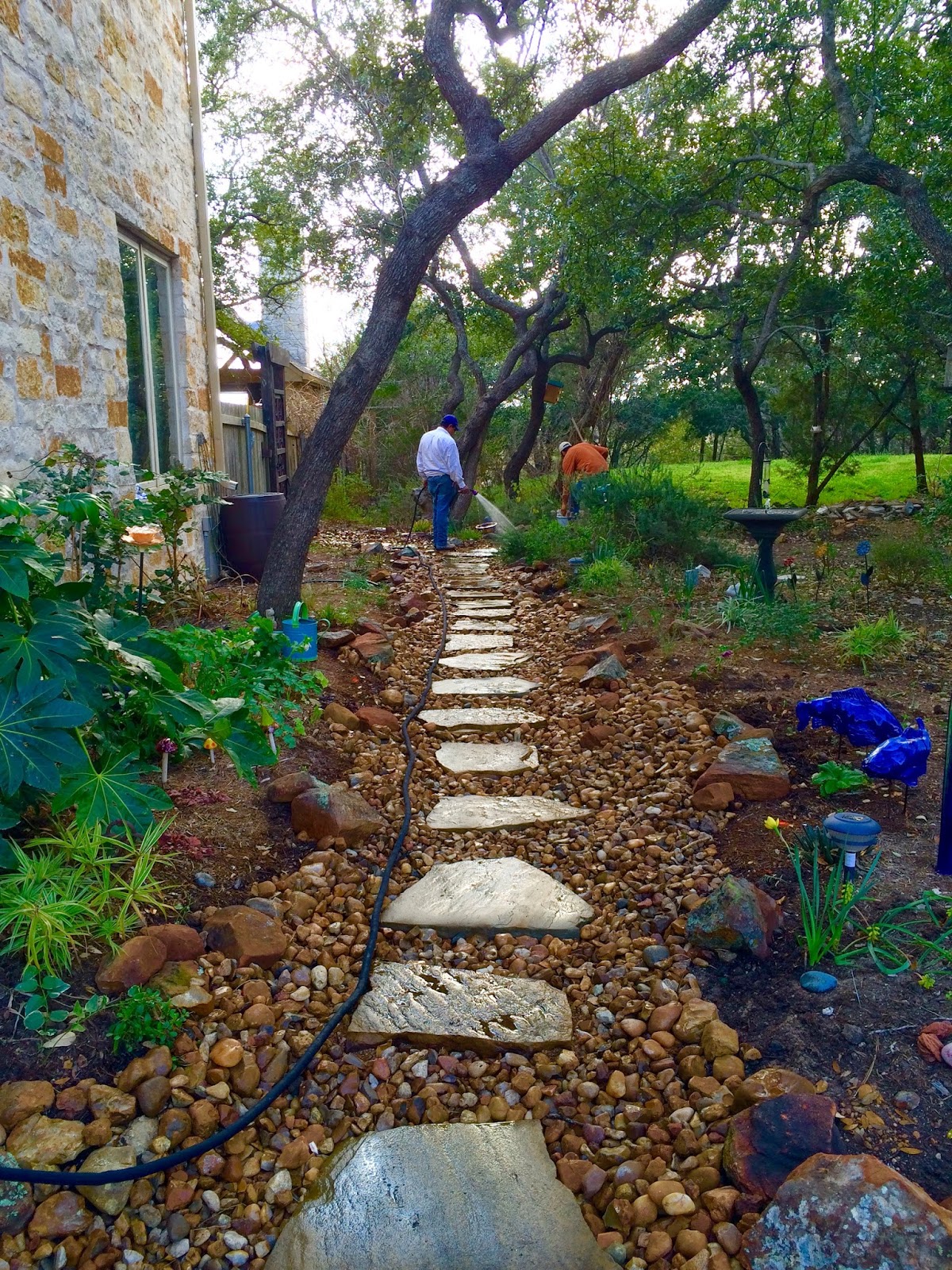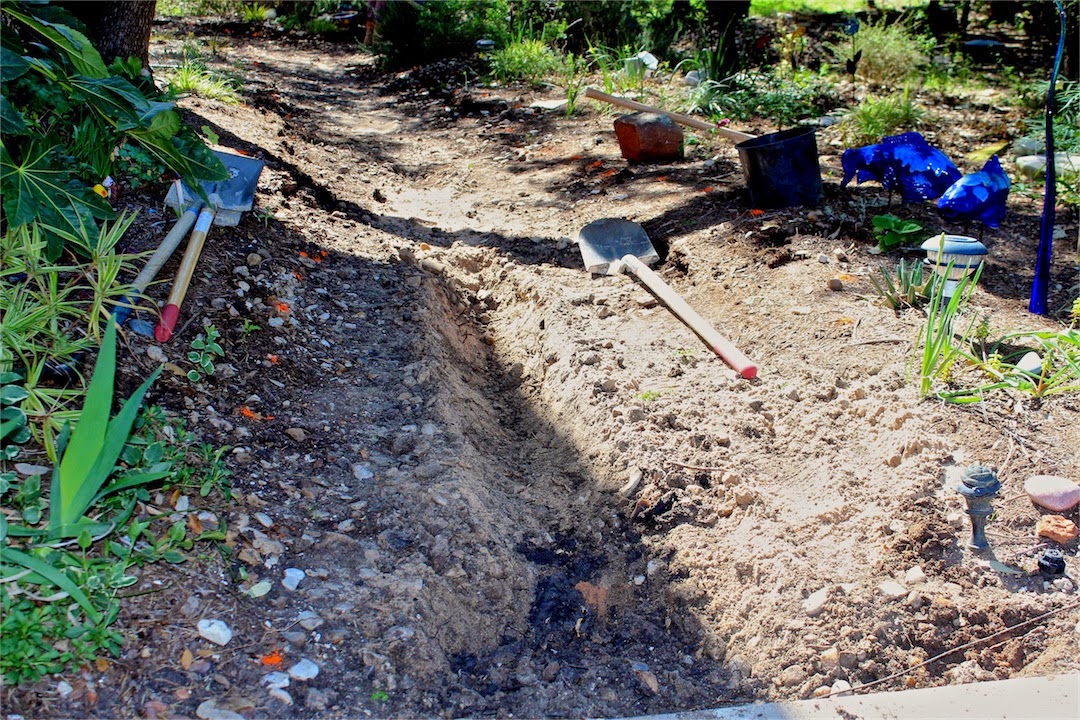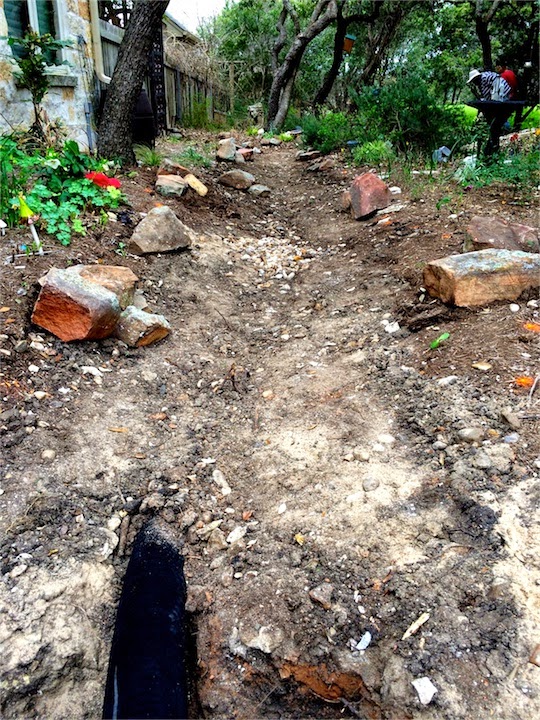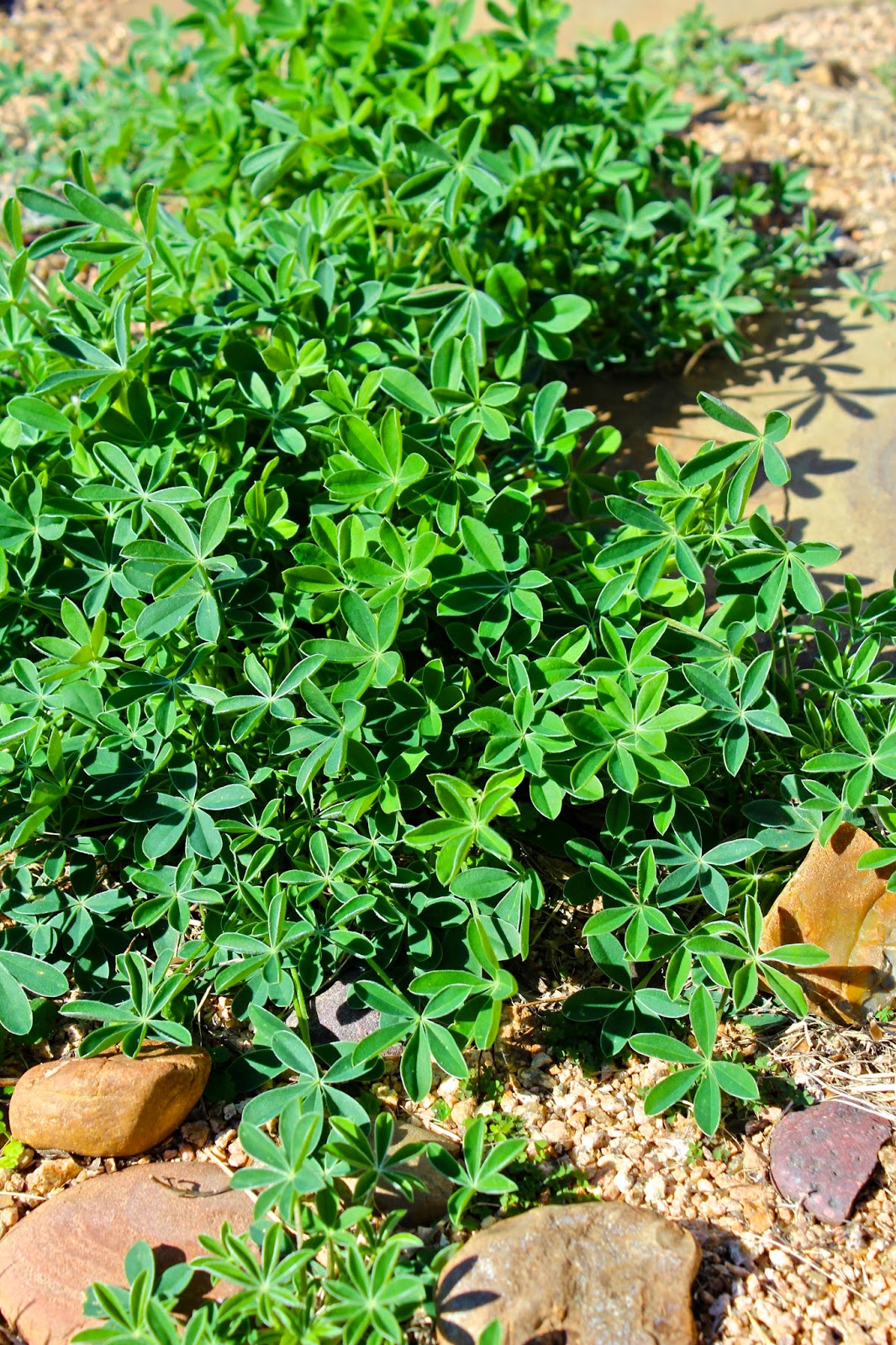New dry creek project done and ready for rain!
The dry creek remodel is done and I can’t wait for it to rain so I can see how well it works.
I know that the very front of the dry creek already works because I washed all the dried dirt from the driveway puddle area into the creek bed and it just dropped down between the rocks like it’s supposed to, instead to swirling in the dirt and lapping back at me.
The moss rocks are gorgeous. (I know my crew thought I was crazy when I oohed and aahed over the great colors on them!) They’re set for the most part, but I will adjust them some more so that they look random. (I don’t really do random, so it will have to be a very carefully-arranged faux random.)
And, as always, one project begets another. During these two days, I:
- created another bed which begs to be filled,
- extended the path and opened up more area that needs to be planted,
- removed rock from a bed that now needs more of the moss rock and Oklahoma to define it
- put two new Oklahoma flagstones where old limestone steps were, so now I need a few more to make it look even nicer,
- need to take all of the white/gray flat native stone that used to line the bed and move it to the back of the property to make a path to the shed so we don’t have to walk in the mud back there when it rains.
Then there are the plants. It’s time to move a few things, say good bye to a few things and go nursery trolling for some fabulous new additions to fill holes and begin new experiments.
This week’s lows in Austin range from 44 to 31 and next week’s lowest point only gets down to 39, so I will go ahead and start planting. We can most certainly have another freeze as far out as the next 4 weeks, but isn’t that what gardening is all about? Testing Mother Nature!
After the last two wonderfully warm days, I am eager to get into the garden – and glad to be done with digging and moving rock. Plants are much easier.
What tops your garden to-do list for this spring? Happy Gardening.
































